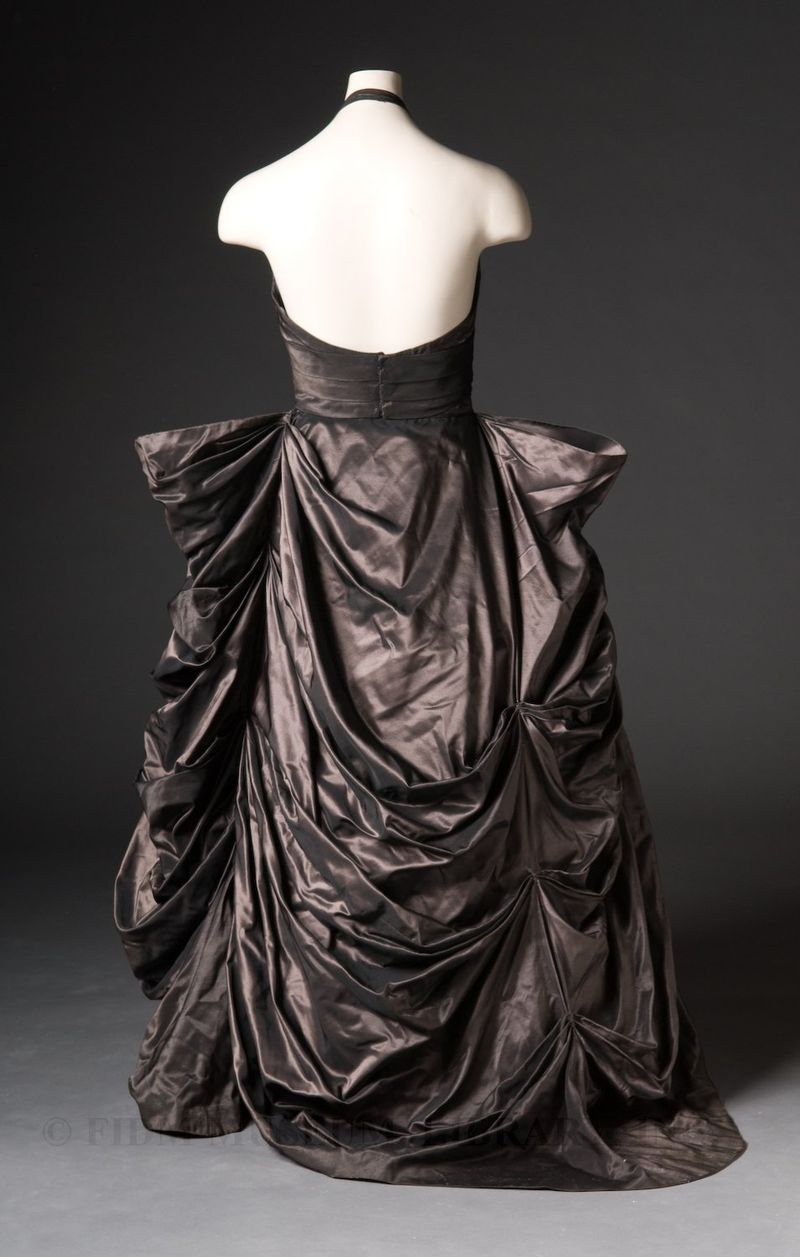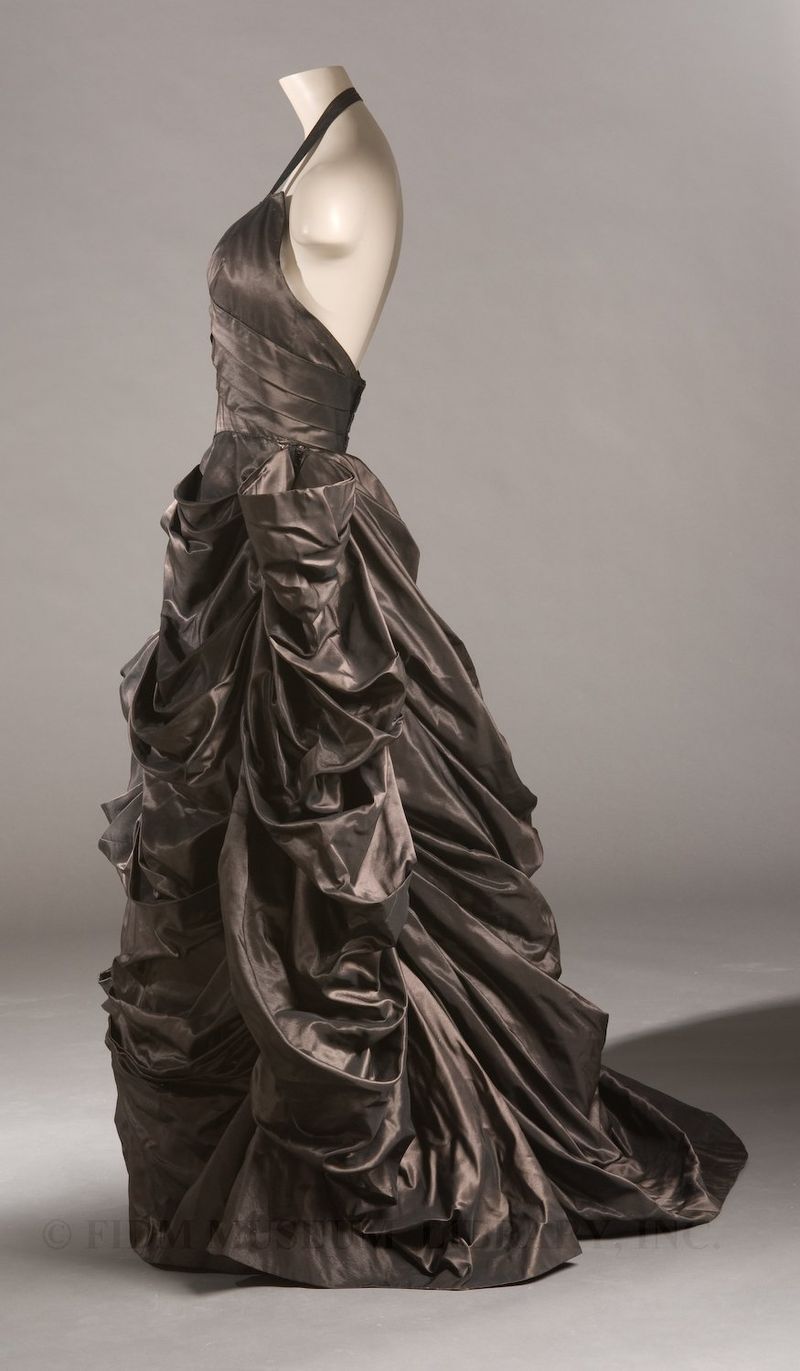Adrian Ltd.
"What must be admired most in Adrian's fashions is their construction; he is an architect, balancing proportions and studying every line. His approach is original and frequently unconventional, but that is what makes the viewing of an Adrian collection exciting."1
When Adrian decided to leave the world of costume design in 1941 and open Adrian Ltd, he could have had no knowledge of how perfect his timing would prove to be. With the Nazi invasion of Paris in 1940, all contact with the French fashion industry halted. As nearly all American designers based their designs on those originating from Paris, the absence of information from France created a fashion vacuum. American designers stepped up to the plate, and soon began to create fashions based on an idealized American lifestyle. These new fashions were often casual, practical and made of durable fabrics. Both New York and Los Angeles fought for the title of "America's Fashion Capitol." The February 19, 1941 title of a Los Angeles Times article declared, "East and West Struggle for Fashion Dictatorship," and suggested that Los Angeles would win the battle, ultimately becoming "more powerful in its sway over the civilized world than Paris ever thought of being." Adrian debuted his first collection for buyers in January of 1942 at the May Company department store in Los Angeles. Buyers were not particularly excited about this initial collection, so Adrian held another show in February of the same year. This show was a great success and Adrian was soon selling his designs in department stores throughout the country. At the time he said, "It is thrilling to be designing for American women and I can only hope the women will enjoy wearing my clothes after they have purchased them for their own."2 Adrian's timing was perfect; with his well-regarded name and design skills, he was bound to be a success. In his new incarnation as a fashion designer, Adrian intended to design for every woman, not just movie stars. Throughout the years of World War II, Adrian's collections were considered wearable and practical,yet stylish and flattering. Individual garments were always given witty, topical names and showcased the inherent qualities of the chosen fabric. Drapeable jersey was used for slinky evening gowns and sensible woolens were used to create suits with interesting details such as mitered stripes and geometric appliques. Wartime restrictions on fabric usage and ornamentation meant that Adrian, like all American designers, had to be inventive with his detailing. With the end of World War II-era fabric rationing, Adrian was free to create evening gowns that incorporated multiple yards of fabric. Though Adrian's day fashions tended to showcase clean lines and surprising details, Adrian's evening gowns were often quite dramatic, offering a touch of glamour that hearkened back to his days as a costume designer. Taffeta was a favorite fabric as its inherent stiffness lent itself to dramatic, sculptural shaping, as in the gown below. Evening gown Adrian 1948 2006.883.1 Gift of Bob Diamond This gown incorporates elements typical of Adrian's evening gowns of the late 1940s. Swagged iridescent taffeta creates a full skirt with draped effect and dramatic fabric panniers at each hip. The back of the skirt features an asymmetrical train, another favorite device. Adrian repeated this 18th century influenced silhouette multiple times, creating similar versions of this gown using different colors of taffeta and varying the bodice. He designed a version for his wife, Janet Gaynor, which was called "The Tigress" and featured tiger-striped taffeta. Other evening gowns from this period feature taffeta wings jutting from hips and shoulders and voluminous skirts, all with a sculptural feel.
Adrian's design career effectively ended in May 1952, when he suffered a heart attack during work on his fall collection. Adrian's ability to span the gap between the silver screen and everyday life indicated a level of creative ability possessed by few designers, and rather than entrust someone else with design duties, Adrian decided to close his company. Adrian and his wife moved to Brazil in 1954, returning to Los Angeles in 1958 when Adrian was asked to design costumes for a stage production. On September 12, 1959, Adrian passed away due to a cerebral hemorrhage.
1 Pope, Virginia. "Wide Range Seen in Style Designs" New York Times. 22 Sept. 1948.: 37. 2. Weaver, Sylvia. "Designers Here Best on Earth" Los Angeles Times.18 Feb. 1942.: B14. Esquevin, Christian. Adrian: From Silver Screen to Custom Label. New York: Monacelli Press. 2008.

